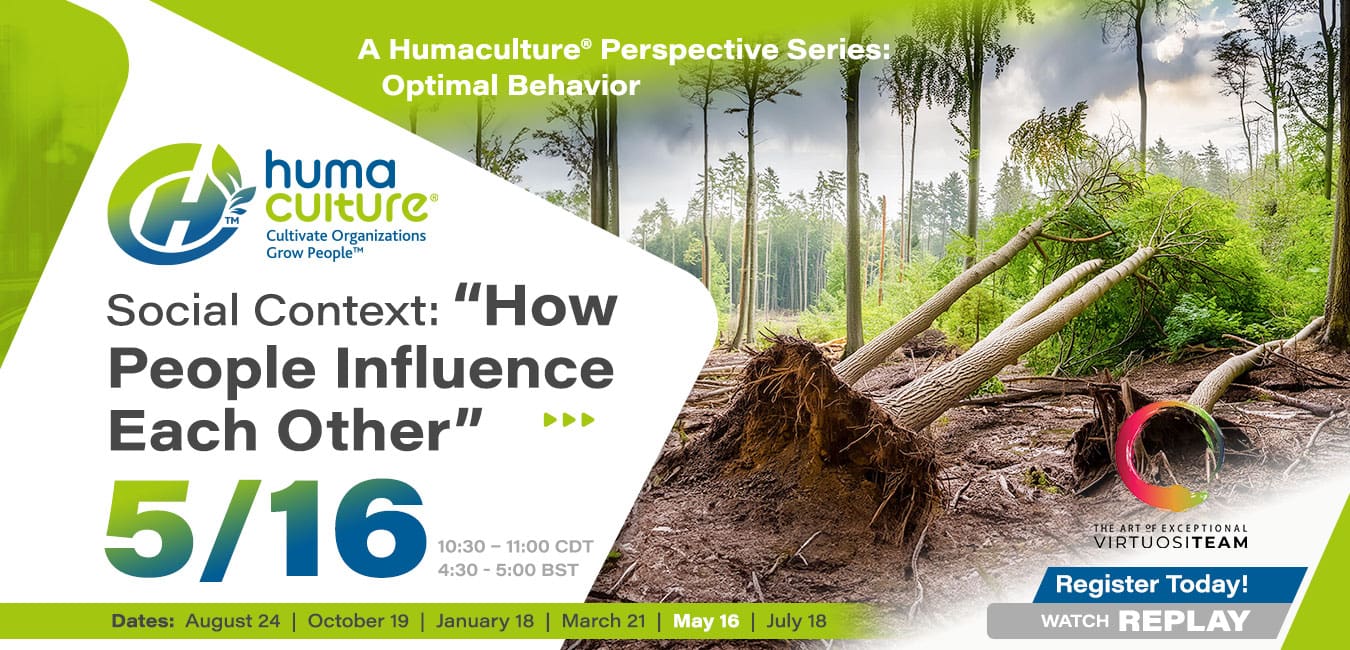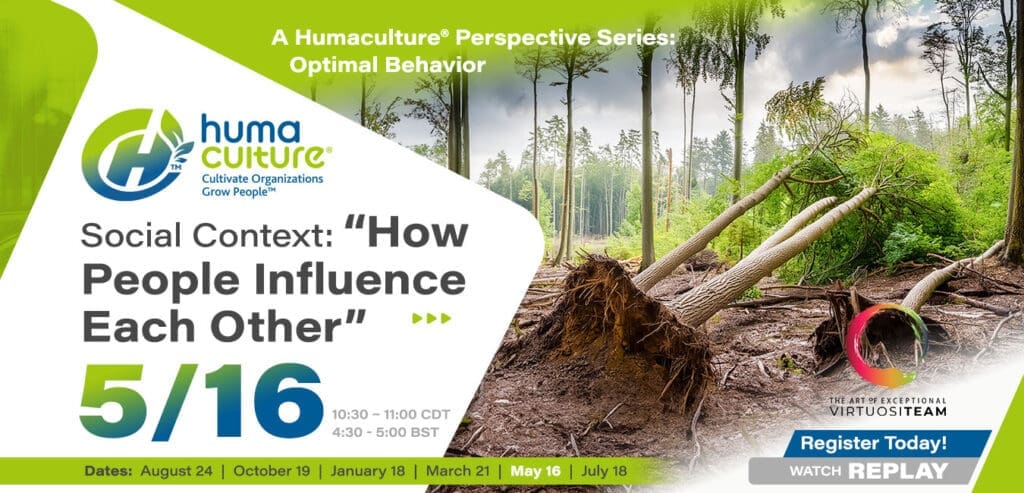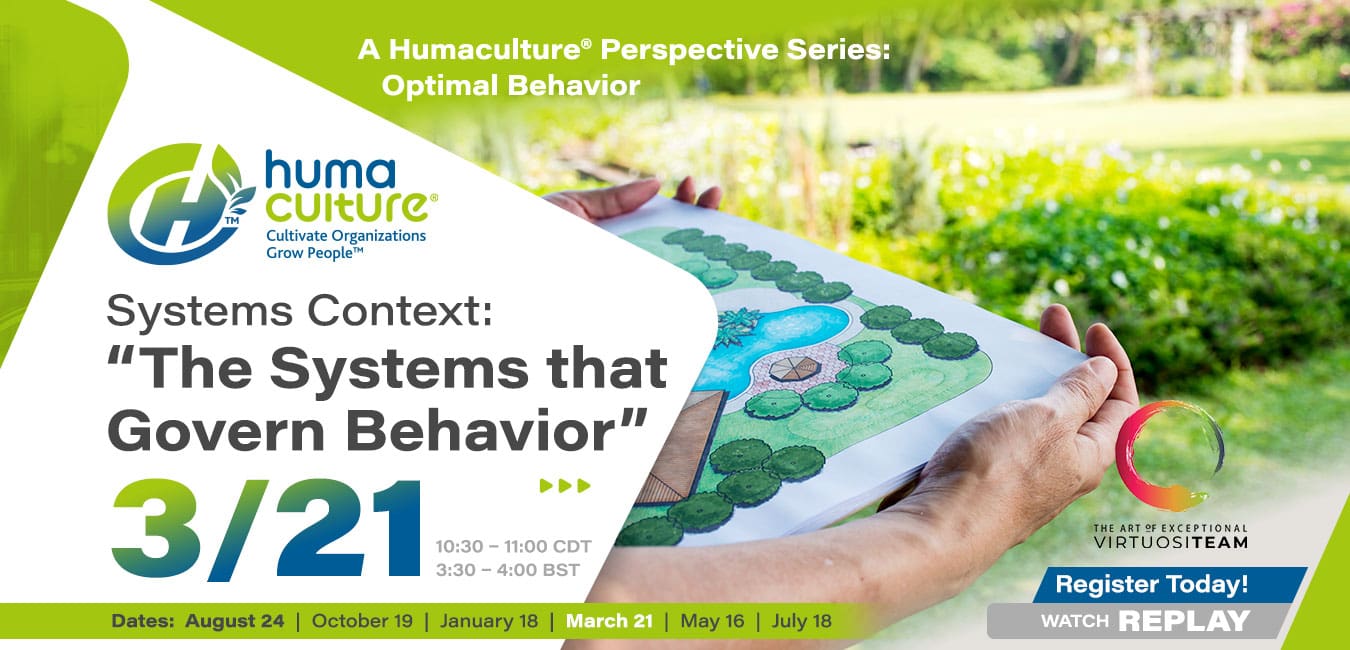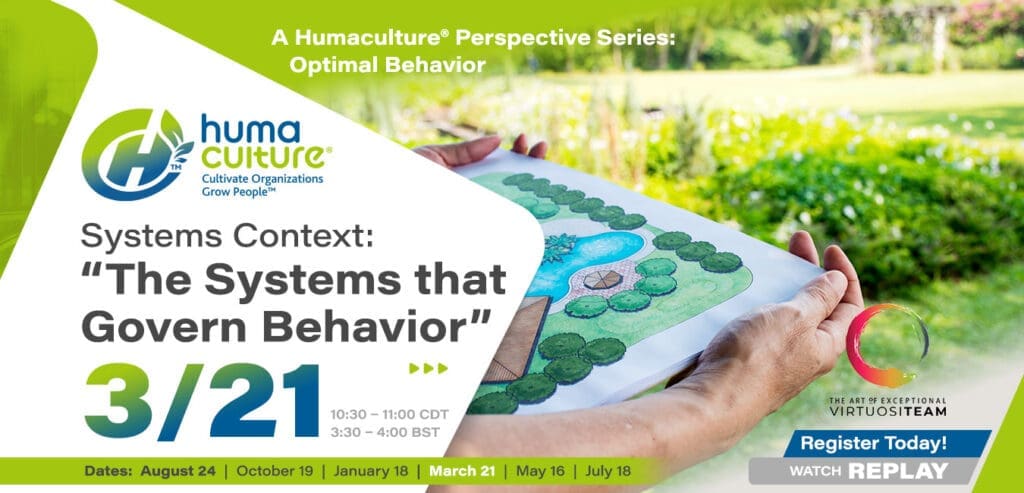About Humaculture, Inc.
View all posts by Humaculture, Inc.
Grocery Industry HR Survey 2025: Key Insights for Regional Retailers

Posted by Humaculture®
September 18, 2025
With grocery prices up ~25% since 2020 and labor shortages intensifying, regional grocers need innovative workforce strategies to stay competitive. At Humaculture®, we’re excited to launch the Grocery Industry HR Survey 2025, designed to deliver actionable insights for regional grocery stores facing grocery HR challenges like turnover, rising costs, and policy shifts.
Why Participate in the Grocery Industry HR Survey?
The Grocery Industry HR & Benefits Survey uncovers correlations between HR practices, total rewards, and outcomes like employee retention, productivity, and labor cost management. By joining, you’ll gain:
- Exclusive Benchmarking: Compare your practices to industry trends.
- Actionable Insights: Address labor shortages in the grocery industry and optimize employee retention in grocery stores.
- Industry Leadership: Contribute to a report shaping grocery industry benefits trends.
Watch a replay of our Grocery Industry HR Survey 2025 Webinar to learn more.
Take the Grocery Industry HR Survey 2025 now.
Addressing Grocery HR Challenges in 2025
Regional grocers face unique pressures:
- Economic Shifts: New tariffs and inflation increase costs.
- Labor Shortages: Immigration policies risk short-term workforce gaps, raising labor costs.
- Competition: Big-box stores and discounters challenge market share.
- Consumer Trends: Private-label products hold over 20% market share with near-universal adoption, demanding agility.
Our survey explores regional grocery workforce strategies for:
- Attracting and Retaining Talent: Competitive compensation and benefits.
- Boosting Productivity: Training and workplace culture initiatives.
- Managing Costs: Balancing wages with operational efficiency.
Learn how our total rewards philosophy leads success in a grocery setting.
Engaging with the Grocery Industry
Humaculture® is committed to driving industry-wide impact by sharing insights at key grocery events where HR and workforce topics take center stage:
- Grocery Impact 2025 (November 5-7, Orlando): Focused on “The Power of People,” featuring sessions on leadership, talent development, and innovative HR strategies.
- Groceryshop 2025 (September 28–October 1, Las Vegas): A hub for grocery innovation, including discussions on tech-driven workforce solutions and supply chain impacts on labor.
These events align with 2025 HR trends like skills-based hiring, AI integration, and financial wellness programs—key areas our survey addresses. Join us to spark conversations on empowering regional grocers.
Survey Highlights
- Quick and Confidential: 25-30 minutes, anonymized responses.
- Comprehensive: Covers compensation, training, culture, and grocery industry benefits trends.
- Incentives:
- Executive summary and benchmarking report.
- Recognition in an upcoming Humaculture® whitepaper.
- Personalized report via a follow-up meeting.
Join Us to Shape Grocery HR
Take the Grocery Industry HR Survey 2025 and share on LinkedIn or X with #GroceryHR to drive industry change. For questions, contact any of our team members:
| Steve Cyboran | CEO, Consulting Actuary, Chief Behavioral Officer |
| Wes Rogers | President, Humaculturist® |
| Paula Labian | Former CHRO, HAC/Whole Foods |
| Marc Jones | Former CEO, HAC |
| Sam Martin | Former CEO, A&P, SVP Operations, Wild Oats Market |
FAQ: Grocery Industry HR Survey 2025
- What is the Grocery Industry HR Survey?
A 25-30 minute survey addressing grocery HR challenges like turnover, labor costs, and benefits for regional grocers. - How can regional grocers benefit?
Gain benchmarking data and actionable insights for employee retention in grocery stores. - Is it confidential?
Yes, responses are anonymized, ensuring candid feedback.
Humaculture® is a registered trademark of Humaculture, Inc.
People Development: A Humaculture® Perspective Series
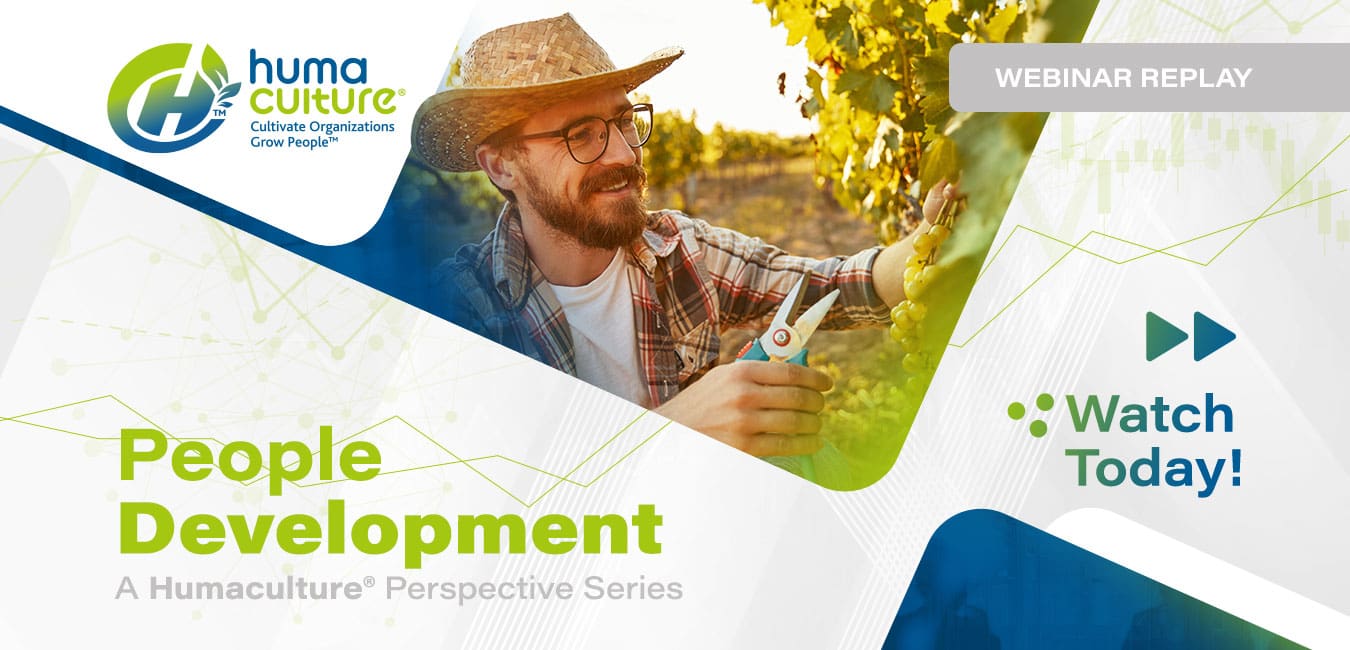
People Development Overview
In this webinar series, we explored ways organizations can rethink the traditional performance management and people development processes to make them more meaningful, impactful, and aligned with the organizational vision and strategy – focusing employees and leaders on what is truly important.
Successful horticulturists recognize the overwhelmingly positive impact of pruning. Pruning is the process of removing branches that:
- Are not supporting the desired shape of the plant the horticulturist seeks,
- Take energy from the plant that reduce productivity,
- Shade or otherwise interfere with the productivity of the other branches.
Effective pruning allows the plant to focus its energies in the most effective and productive areas. People, like plants, often expend energy and time in areas that distract them from achieving their highest and greatest purpose and contributions. In any organization, it is important to help employees remove or overcome the impediments that hold them back, and focus on the areas and interests that will really help them achieve their goals, as well as the strategic priorities of the organization. This series highlights several ways organizations can be innovative and more effective than traditional “performance management.”
The topics from the series include:
| Performance Management: Walking the Garden |
| The shift from Managing to Facilitating Growth |
| Shaping Talent for Success: Pruning the Vines |
| Capabilities: Prune to Encourage Growth |
| Career Planning: Effective Pruning Bears Fruit |
| Employee Development |
| Manager Development |
| Leadership Development |
Available Support
We are available to support you in your strategy, design, compliance, financial, and monitoring needs. To that end, our team of consultants, including actuaries, clinicians, behavioral health, pharmacy, and legal resources are available to guide you through the compliance process. Please contact us.
Hidden Opportunities, A Strategic Compliance Series
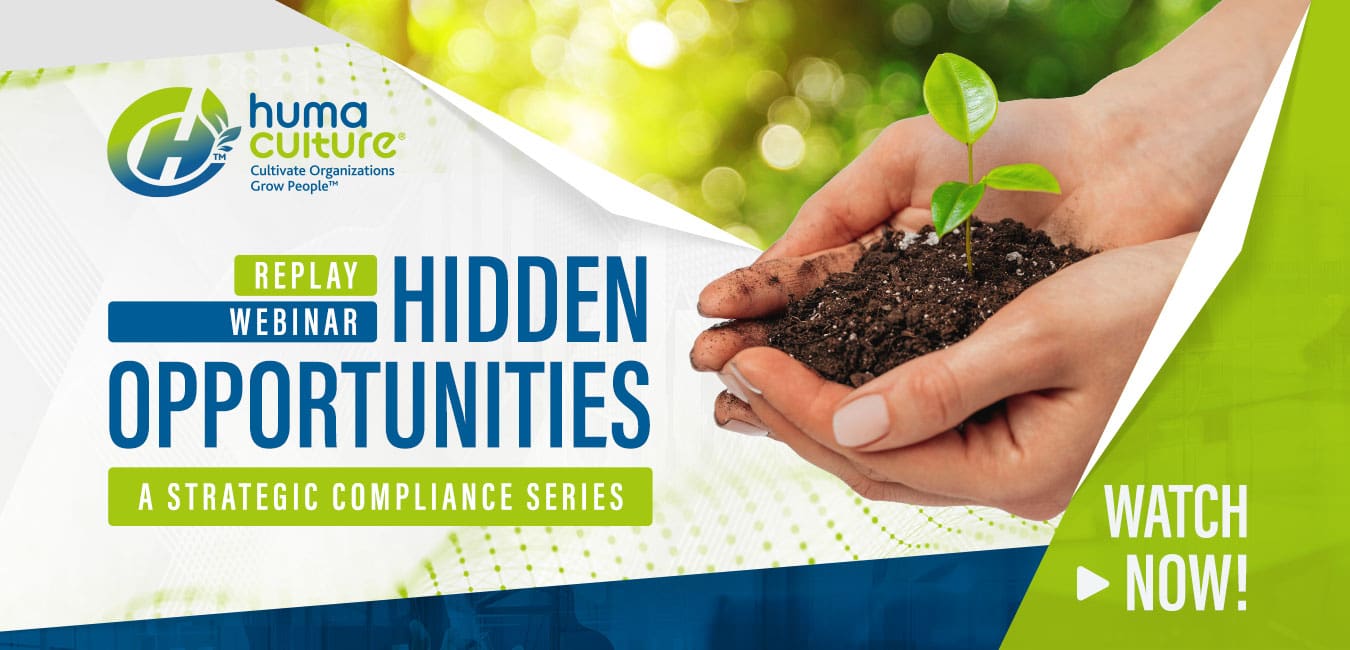
Hidden Opportunities Overview
In this webinar series we explore ways organizations can go beyond basic compliance and improve their “organizational soil” through a strategic response to the No Surprises Act and the Transparency in Coverage regulations. Our goal is to help organizations create a competitive advantage. Does it make sense to expend limited resources to merely comply with the law and regulations, or is there a way to strategically “design the compliance away” while differentiating the employee value proposition?
For example, a knowledgeable horticulturist may use the high temperatures of the summer season, which are a normal part of the environment just as law and regulation are a normal part of the business environment, to solarize the soil. This is a low cost and simple process of spreading a plastic sheet over an area of soil to trap and intensify the sun’s energy. It is a process that works well to destroy weed seeds and pathogens. Similarly, a knowledgeable Humaculturist® can employ techniques to leverage laws and regulations to strategically improve the organization. This webinar series seeks to identify some of these techniques.
The topics from the series include:
| Hidden Opportunities: No Surprises Act |
| Surpassing Mere Compliance – Including Reference Based Pricing |
| Preserving the Harvest…Leveraging HSAs |
| Hidden Opportunities: Transparency |
| A “Dope” Response to Pharmacy Transparency |
| Mental Health Parity…A Lucid Approach |
| Pest Management, Minimizing Plan Losses through Fee Disclosure |
Available Support
We are available to support you in your strategy, design, compliance, financial, and monitoring needs. Our team includes experts in organization design, actuarial science, clinical, and legal can guide the process to achieve optimal behavior. Please contact us.
Trends in Diabetes and Excess Mortality – CEO Interview
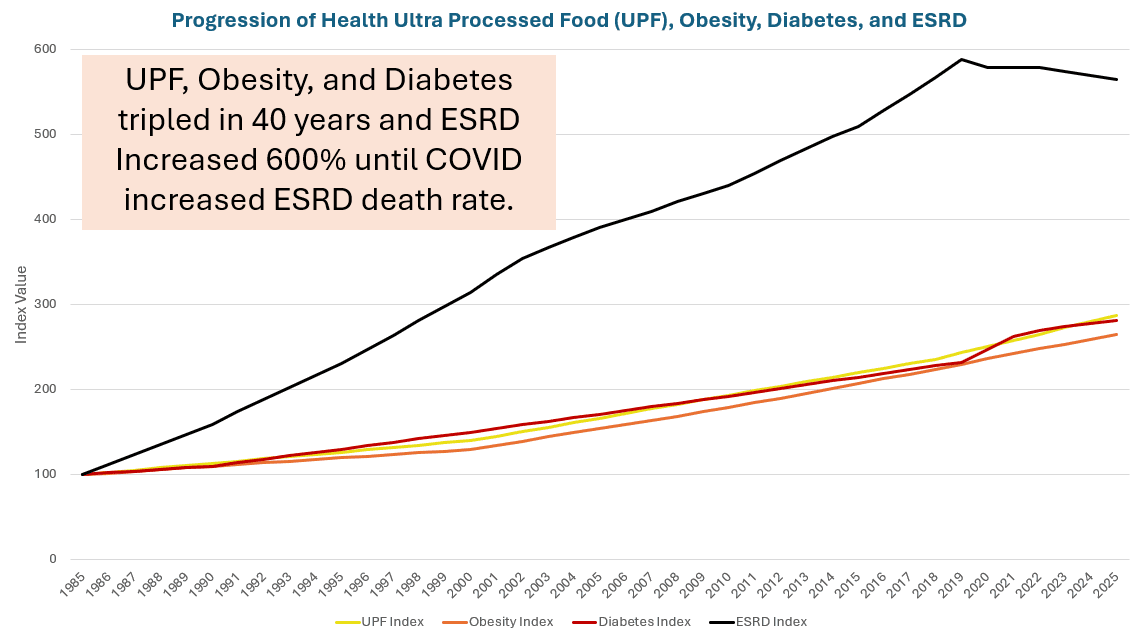
Read about Humaculture’s CEO’s, Steve Cyboran, ASA, MAAA, FCA, CEBS, interview with Life Annuity Specialist featured in Diabetes is Killing More Americans Than Ever Before. Steve explains the trends in diabetes over the last 40 years. The rate of diabetes almost quadrupled from around 3% in the 1980s to 11.3% in 2023. Deteriorating health is a contributing factor to the trends in diabetes, which leads to elevated health costs, disability rates, and mortality.
The good news is that there is quite a bit insurance carriers and employers can do to stem the tide and help People become healthier to the benefit of the insured and the Organization’s bottom line. Contact us to discuss how.
Available Support
We are available to support you in your strategy, design, compliance, financial, and monitoring needs. Our team includes business and human relations leaders, finance experts, actuaries, clinicians, behavioral health experts, pharmacy experts, and legal resources to guide you through the strategy and compliance process. Please contact us: [email protected].
Optimal Behaviors: Making Optimal Behavior the Natural Choice
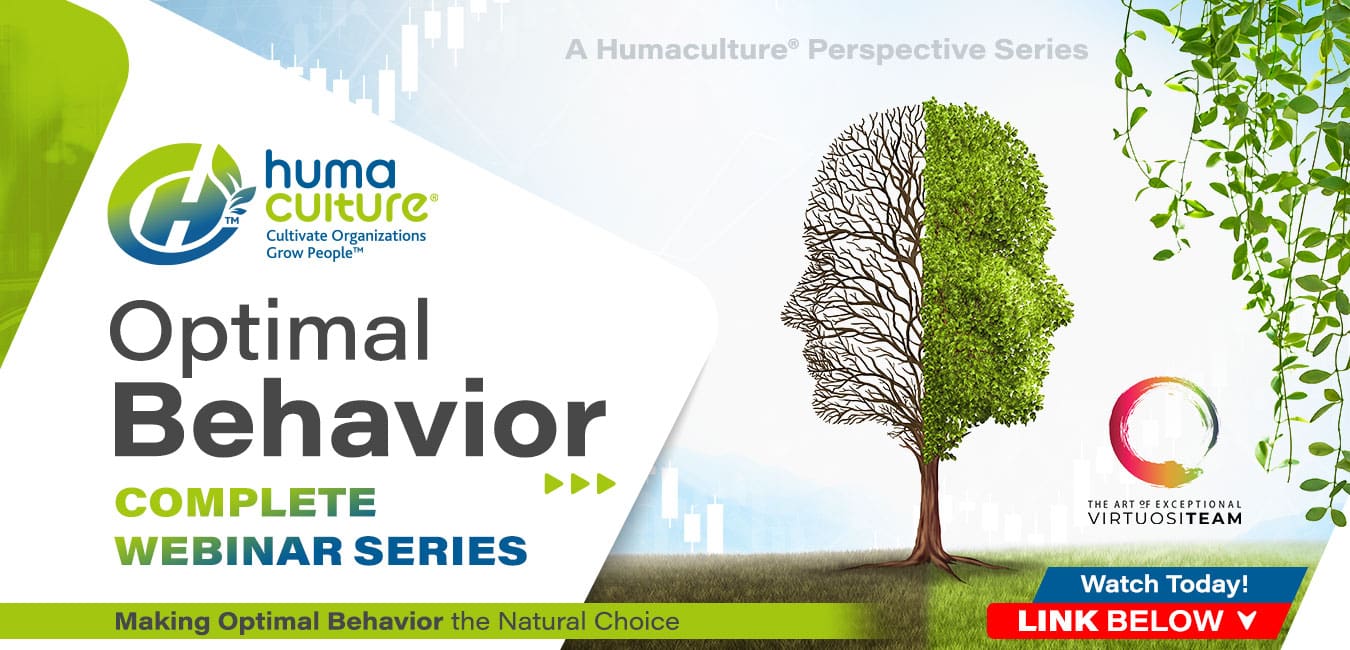
Optimal Behaviors Overview
Watch this webinar series to see how we explore ways organizations can incorporate research-based, practical approaches to create the conditions where Optimal Behaviors are the natural choice. Optimal Behaviors are those that are the most beneficial to the individual as well as the organization.
Horticulturists consider the impact of the conditions in which plants are grown (e.g., climate, soil structure, space and fertility, arrangement, companion planting). Growth and productivity improve when the context of each dimension is appropriately addressed. Expertise from fields like botany and soil sciences provide the successful horticulturist with the information to do their jobs well.
Similarly, Humaculturists® consider the Seven Dimensions of Humaculture® to employ knowledge solidly “rooted” in science for the best results. Behavioral Research Applied Technology Laboratory (BRATLAB), Virtuositeam’s research arm, set out to answer some crucial questions related to understanding changes in behavior and habit creation:
- Which habits really matter, and to what degree, to the three biggest hidden drivers of sustained performance at work, human health, happiness, and security?
- How do we support people to practice these habits in a way that they experience as easy and natural, and that leaves them feeling highly engaged with their employer?
Four Powers Model of Change
The result: the Four Powers Model of Change. This model helps organizations create a thriving culture by leveraging this key distinction: how people THINK they behave and make decisions, versus how they ACTUALLY behave and make decisions. Four Powers is based on behavioral theories and validated research, behavioral research laboratories, and BRATLAB’s own extensive field testing. BRATLAB looked across industries to find the influence techniques that have been successfully used for years to shape employee and customer behavior.
The topics from the series include:
- Introduction: “Creating the Conditions for Optimal Behavior”
- Spaces Context: “Grow a Willow in a Desert? The importance of Spaces”
- Context of the Self: “The Complexity of Each Person”
- Systems Context: “The Systems that Govern Behavior”
- Social Context: “How People Influence Each Other”
- Harvest Time: “Reaping the Fruit of Optimal Behaviors”
Prior Series
- Hidden Opportunities, A Strategic Compliance Series
- People Development: A Humaculture® Perspective Series
Available Support
We are available to support you in your strategy, design, compliance, financial, and monitoring needs. Our team includes experts in organization design, actuarial science, clinical, and legal can guide the process to achieve optimal behavior. Please contact us.
Webinar Replay: Harvest Time: “Reaping the Fruit of Optimal Behaviors”
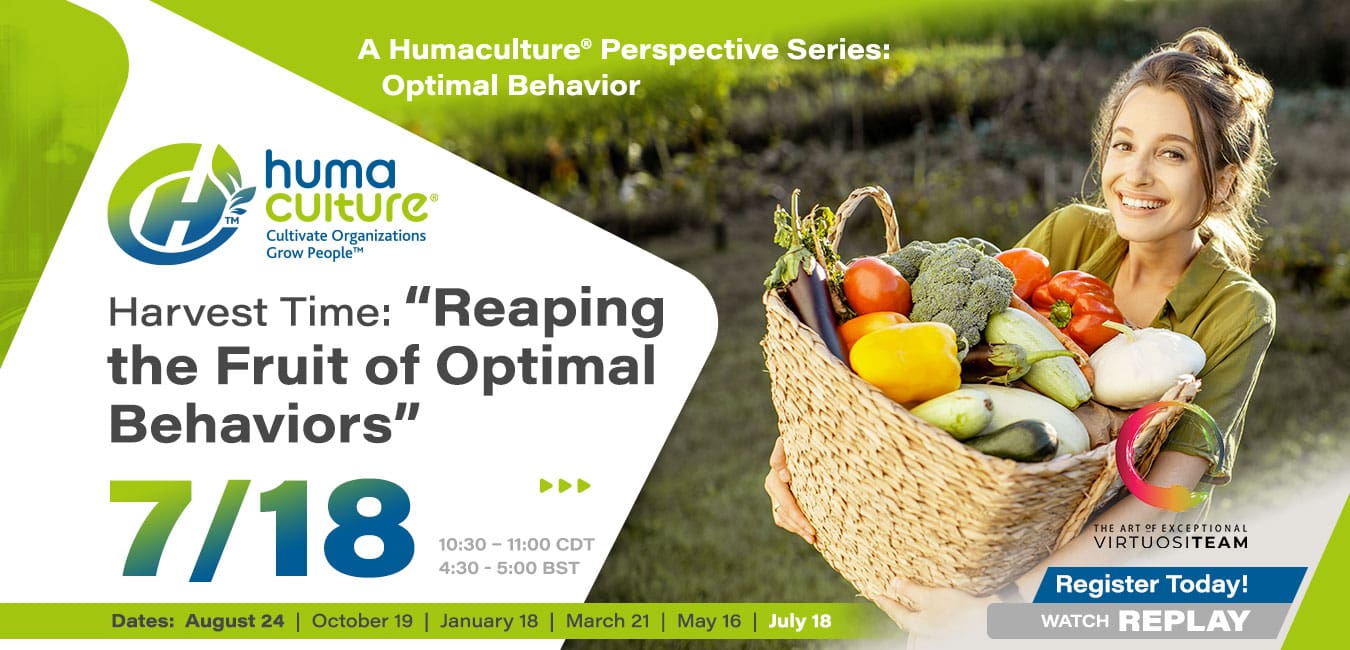
Watch a replay of the sixth and final webinar in Humaculture, Inc.’s “Optimal Behavior: Making Optimal Behavior the Natural Choice” to learn why and how to apply the four Contexts and four Powers of behavior change through a review of a case example.
Presenters
- Steve Cyboran, ASA, MAAA, FCA, CEBS, actuary and strategy consultant
- Wes Rogers, Humaculturist® and strategy consultant
- Colin Bullen, ASA, behavior change actuary
- Hanlie van Wyk, behavior change consultant
Objective
In this sixth and final session in our series on Optimal Behavior, we explore how to apply all the learning from the previous five webinars to reap a bountiful harvest produced by desired behaviors. To reliably achieve sustained Optimal Behavior, we consider all four Contexts – Spaces, Self, Systems, and Social. We do this by applying the Four Powers – the Powers to grow capability, inspire motivation, overcome barriers, and resist temptation – to align the influences acting on People toward supporting the change to Optimal Behavior. We will demonstrate the process of adjusting the Powers within the Contexts and the practical steps to take using a case study in the retail sector. We wrap up with the virtuous cycle that is the Change Ecosystem, showing how to reinforce Optimal Behaviors and ensure those behaviors stick. At the end of this webinar, attendees will understand how the Powers and Contexts come together to create the Four Powers behavior change framework and how that framework can be applied in practice.
“In the final analysis, change sticks when it becomes the way we do things around here.” – John P Kotter
Harvest Time Key Takeaways
Join us to learn how to apply the Four Powers model of change to reap the following fruits:
- Confident and capable People
- Inspired workplace
- Agile workforce
- People armored against distractions
Watch
Watch the Optimal Behavior: Harvest Time: “Reaping the Fruit of Optimal Behaviors” via Rumble or YouTube.
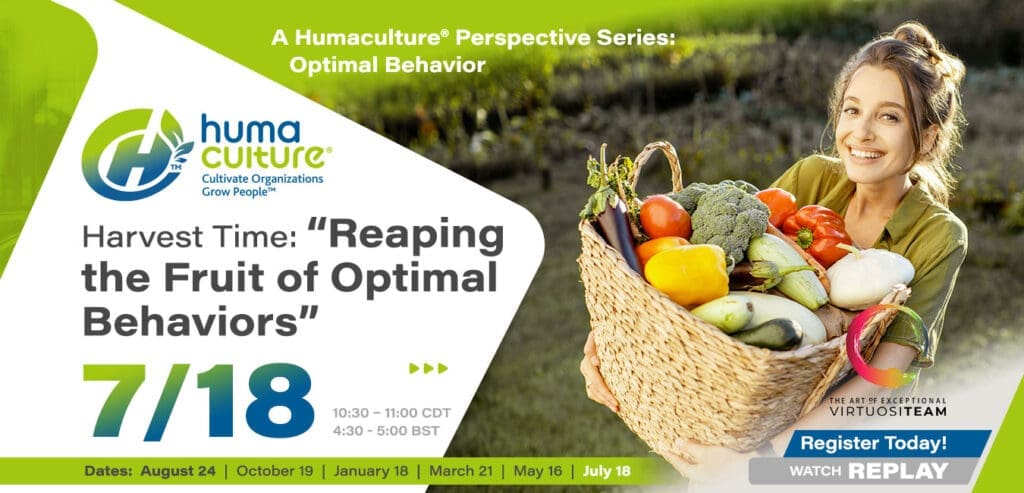
Available Support
We are available to support you in your strategy, design, compliance, financial, and monitoring needs. Our team includes business and human relations leaders, finance experts, actuaries, clinicians, behavioral health experts, pharmacy experts, and legal resources to guide you through the strategy and compliance process. Please contact us: [email protected].
Harvest Time: “Reaping the Fruit of Optimal Behaviors”
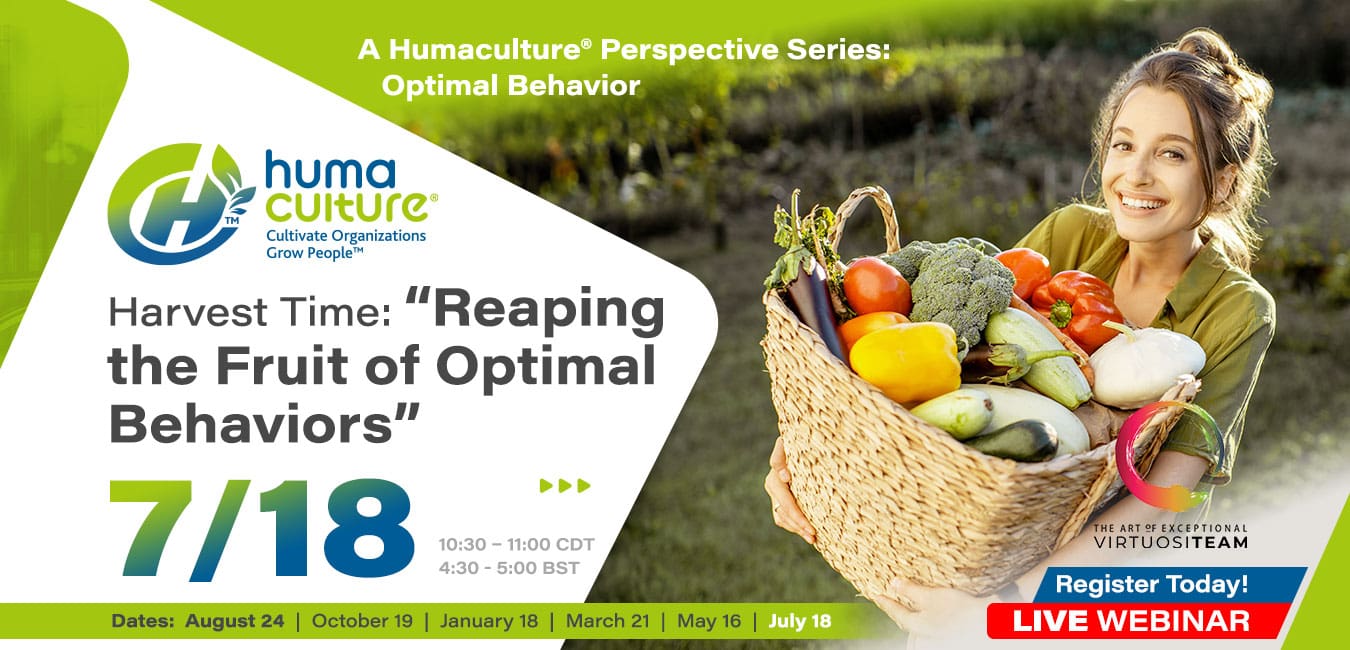
Join us on Thursday, July 18, 2024 from 10:30 to 11:00 CDT (4:30 to 5:00 BST) for the sixth webinar in Humaculture, Inc.’s “Optimal Behavior: Making Optimal Behavior the Natural Choice.” You will learn why and how to apply the four Contexts and four Powers of behavior change through a review of a case example.
Presenters
- Steve Cyboran, ASA, MAAA, FCA, CEBS, actuary and strategy consultant
- Wes Rogers, Humaculturist® and strategy consultant
- Colin Bullen, ASA, behavior change actuary
- Hanlie van Wyk, behavior change consultant
Objective
In this sixth and final session in our series on Optimal Behavior, we explore how to apply all the learning from the previous five webinars to reap a bountiful harvest produced by desired behaviors. To reliably achieve sustained Optimal Behavior, we consider all four Contexts – Spaces, Self, Systems, and Social. We do this by applying the Four Powers – the Powers to grow capability, inspire motivation, overcome barriers, and resist temptation – to align the influences acting on People toward supporting the change to Optimal Behavior. We will demonstrate the process of adjusting the Powers within the Contexts and the practical steps to take using a case study in the retail sector. We wrap up with the virtuous cycle that is the Change Ecosystem, showing how to reinforce Optimal Behaviors and ensure those behaviors stick. At the end of this webinar, attendees will understand how the Powers and Contexts come together to create the Four Powers behavior change framework and how that framework can be applied in practice.
“In the final analysis, change sticks when it becomes the way we do things around here.” – John P Kotter
Harvest Time Key Takeaways
Join us to learn how to apply the Four Powers model of change to reap the following fruits:
- Confident and capable People
- Inspired workplace
- Agile workforce
- People armored against distractions
Available Support
We are available to support you in your strategy, design, compliance, financial, and monitoring needs. Our team includes business and human relations leaders, finance experts, actuaries, clinicians, behavioral health experts, pharmacy experts, and legal resources to guide you through the strategy and compliance process. Please contact us: [email protected].
Social Context: “How People Influence Each Other”
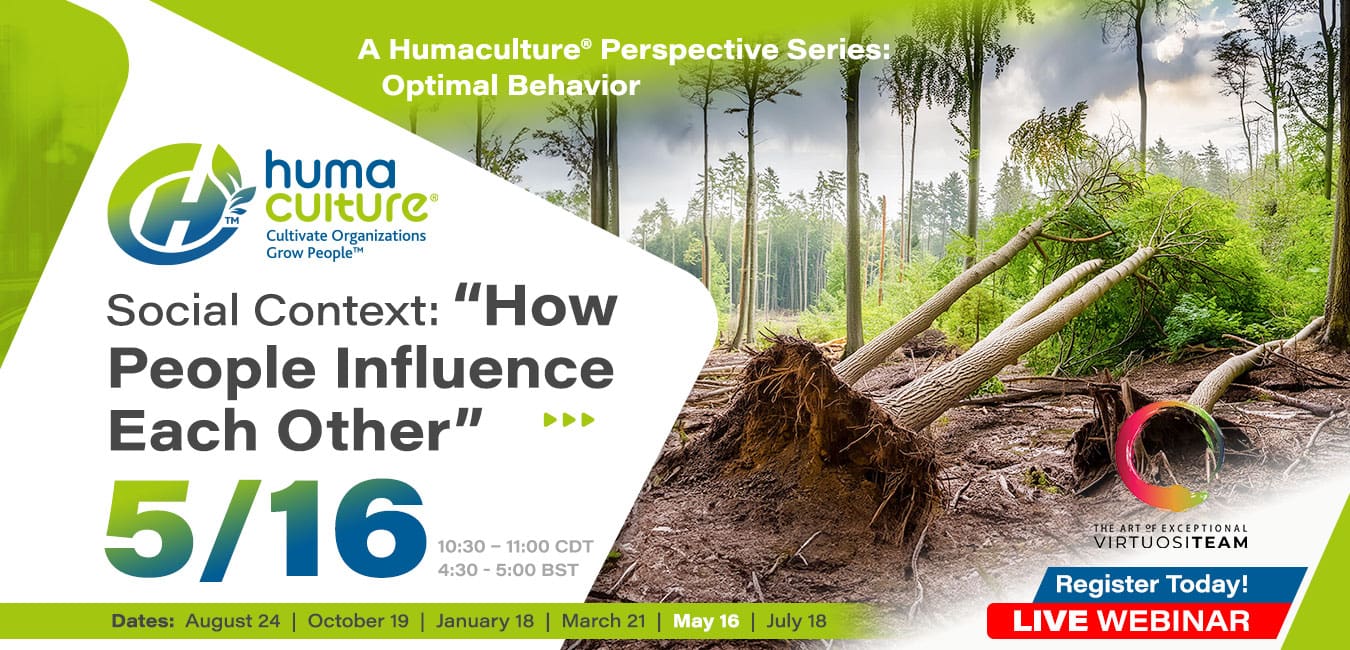
Join us on Thursday, May 16, 2024 from 10:30 to 11:00 CDT (4:30 to 5:00 BDT) for the fifth webinar in Humaculture, Inc.’s “Optimal Behavior: Making Optimal Behavior the Natural Choice.” You will learn why and how the Social Context within an Organization impacts performance and well-being and how it can be used to grow capabilities, inspire motivation, overcome barriers, and resist temptations to lead to Optimal Behavior.
Presenters
- Steve Cyboran, ASA, MAAA, FCA, CEBS, actuary and strategy consultant
- Wes Rogers, Humaculturist® and strategy consultant
- Colin Bullen, ASA, behavior change actuary
- Hanlie van Wyk, behavior change consultant
Objective
In this fifth session in our series on Optimal Behavior, we explore how the Social Context influences behavior and change. To achieve Optimal Behavior, attempts to change require the support of People along the way. The powerful influence of our friends, families, colleagues, bosses, and social connections is around us all the time. In the workplace, change rarely happens unless there are early adopters who visibly engage in the new behavior for others to copy – acting as a role model for the desired Optimal Behavior. These early adopters, who are known by many names including ‘Change Agents’ or ‘Champions’, provide an energy that Inspires Motivation while demonstrating to People like them that change is possible, which builds confidence. Companies successfully moving toward Optional Behavior will connect People to build willpower and make very clear the expectations of everyone involved. Finally, new ways of behaving should be reinforced by creating a new corporate hero archetype who succeeds by demonstrating Optimal Behaviors, not others!
“It was only a sunny smile, and little it cost in the giving, but like morning light it scattered the night and made the day worth living.” – F. Scott Fitzgerald
Social Context Key Takeaways
Join us to learn:
- How ineffective organizations fail to:
- Understand the power of social connection
- Create conditions to make connections natural
- Reinforce the messages to keep people on track
- How effective organizations:
- Leverage social contagion and champions
- Create opportunities for natural interaction
- Celebrate early adopters and share willpower
Available Support
We are available to support you in your strategy, design, compliance, financial, and monitoring needs. Our team includes business and human relations leaders, finance experts, actuaries, clinicians, behavioral health experts, pharmacy experts, and legal resources to guide you through the strategy and compliance process. Please contact us: [email protected].

